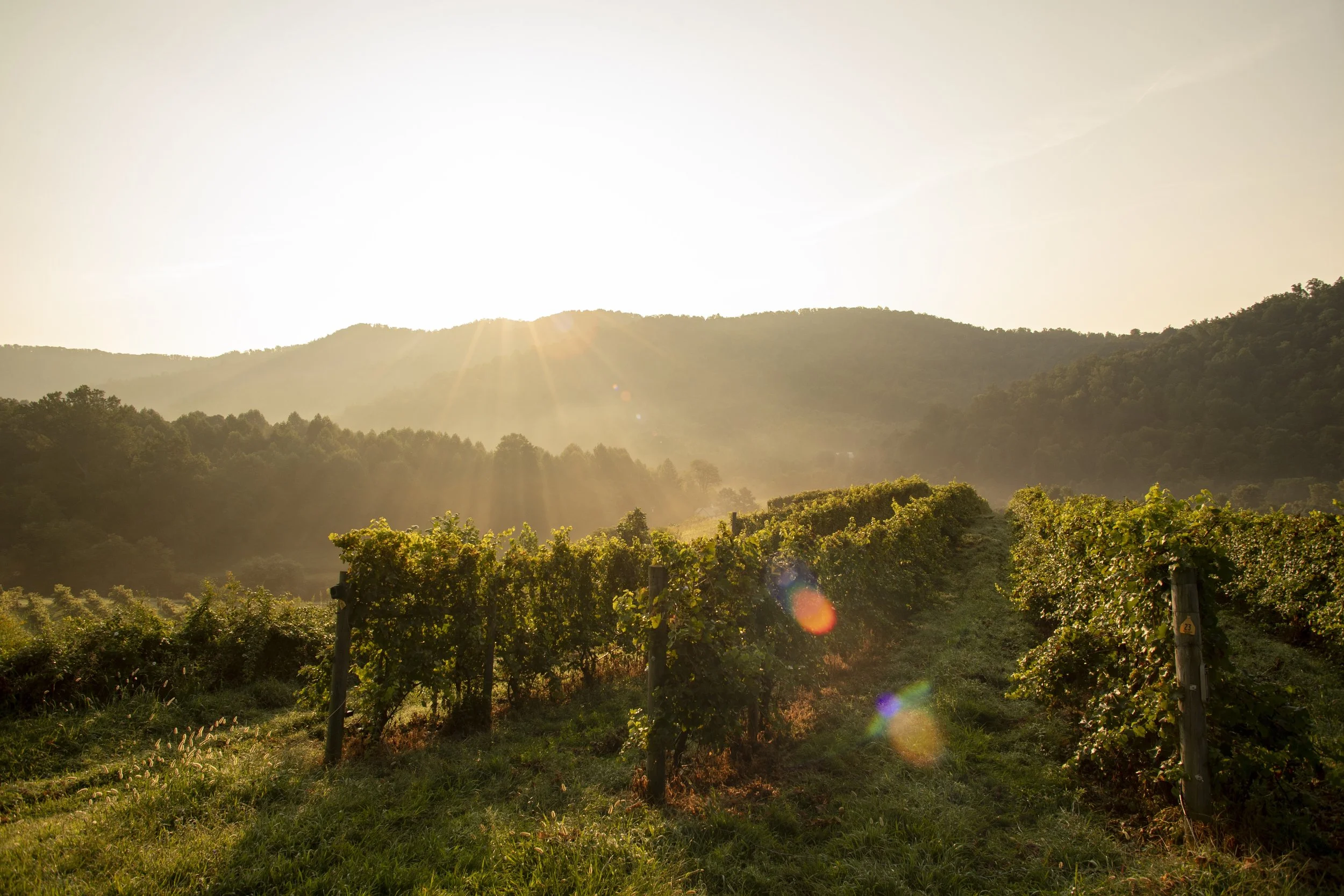Over 5,000 acres of grapes span the state, with new plantings each year. More than 30 types of grapes are grown across 10 regions and within 8 AVAs, due in large part to a variety of different growing conditions.
There is an even split between red and white grape production. Over 80% of vineyard plantings are vitis vinifera. The majority of vines are planted in Northern and Central Virginia, although high-quality wines can be found throughout the entire state.
About Virginia Wine
Virginia Varietals & Wines
-
The most planted variety in Virginia, Cabernet Franc showcases elegance & attitude.
Like many of those unsung heroes of Old-World wine traditions, Cabernet Franc has stepped out of the shadows and into the spotlight in Virginia. Here, it shines as a single-varietal wine. And, you’ll also find it frequently in blends.
Virginia Cab Franc has a character all its own. Simultaneously subtle and complex, this medium-bodied red won’t bowl you over with its intensity but entices you with layers of flavor. Floral aromas and flavors of ripe cherry and blackberry contrast with savory notes of cedar, tobacco, and pepper.
-
In Virginia, Petit Manseng bodes a full-bodied texture that makes distinctive dry white wines but also survives late into the season to make just as wonderful off-dry and dessert wines.
This variety is making waves with its dynamic flavors and versatility as it has begun to thrive in Virginia’s growing climate.
Wines made with Petit Manseng offer aromas of candied fruit, honey, and spice that are complemented with expressive flavors of roasted pineapple, peach, and green apple. Dry Petit Manseng is both rich and acidic, allowing it to pair with everything.
-
Recognized for its intense aromatics and floral characteristics, Viognier thrives in warmer climates (like Virginia) where it can fully-ripen.
Viognier is a full-bodied dry white wine with tantalizing aromas of peach, rose petal, and honeysuckle. Depending on the winemaker’s choice, flavors can range from a just barely ripe mango to sweeter style with a creamy mouthfeel and notes of candied fruit and vanilla.
-
Petit Verdot shines in Virginia’s vineyards, its thick skins and late-ripening nature are well suited to the Commonwealth. Producing fruit with well-developed flavors, the end result– wines with impressive depth, inky color and complexity.
Petit Verdots are full-bodied, dark red wines with just as much boldness in flavor as in color. Strong notes of black cherry, plum, and dark chocolate take center stage on your pallet, while aromas of violet, lavender, and sage capture your sense of smell.
You’ll find Petit Verdot’s power shining throughout blends in Virginia as well.
-
Tannat is an emerging variety in Virginia, growing remarkably well.
Along with earthy flavors and spice, Tannat’s rich palate often showcases juicy fruit flavors, including plum and raspberry, and tends to be high in acidity and tannins with a very full body.
It is often found as a single varietal wine in Virginia. Though, you’ll find unique blends gaining a post in tannin and acid thanks to Tannat.
-
Virginia, brings its own expression to Sauvignon Blanc. Embracing it’s bright acidy and complexities more winemakers are crafting Sauvignon Blanc in Virginia. You’ll often find citrus characteristics and aromas of fresh herbs.
-
Sparkling wine production in Virginia continues to increase. You’ll discover an array of winemaking methods used across the state. More and more wineries are crafting impressive sparkling wines with the traditional method.
-
Bordeaux-style red blends make up some of the most beloved and highly acclaimed wines coming out of the Commonwealth.
While their blending percentages vary greatly across vineyards and vintages, the end products are consistently lush and layered—built to age but hard to resist right now.
-
Although over eighty percent of vineyard plantings are vitis-vinifera, hybrids are creating an interesting story in Virginia. Hybrid varieties like Vidal Blanc, Chambourcin and Chardonnel are found in stand-out bottlings.



